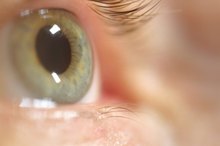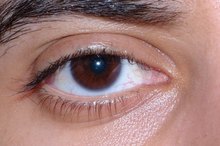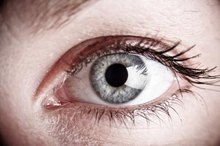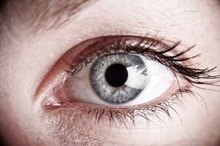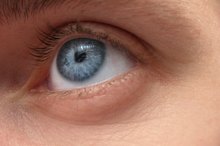What does fact checked mean?
At Healthfully, we strive to deliver objective content that is accurate and up-to-date. Our team periodically reviews articles in order to ensure content quality. The sources cited below consist of evidence from peer-reviewed journals, prominent medical organizations, academic associations, and government data.
The information contained on this site is for informational purposes only, and should not be used as a substitute for the advice of a professional health care provider. Please check with the appropriate physician regarding health questions and concerns. Although we strive to deliver accurate and up-to-date information, no guarantee to that effect is made.
What Are the Causes of Film on Eye?
A layer of film on the eye, though inconvenient and uncomfortable, usually does not signal a serious health condition. To maintain eye health, a healthy diet and proper hygiene usually suffice. If the film on your eye does not clear after a few days, consult a ophthalmologist or physician.
If you are experiencing serious medical symptoms, seek emergency treatment immediately.
Dry Eye
Dry eye occurs when the eye does not produce enough tears naturally 1. Normally, the human eye produces a multilayer tear that constantly bathes the eye in moisture. The oil, mucus and water layers of the tear must refresh constantly on the eye, or the eye develops a "film" layer.
- Dry eye occurs when the eye does not produce enough tears naturally 1.
- The oil, mucus and water layers of the tear must refresh constantly on the eye, or the eye develops a "film" layer.
Meibomianitis
What Causes Eye Mucus?
Learn More
Meibomianitis develops when the meibomian glands are swollen from allergies, adolescence or skin conditions such as rosacea. When swollen, the meibomian glands produce an eye tear with excess of oil 1. This oil collects on the eyelids and covers the eye with a film layer. The film layer worsens as bacteria grows on the oily surface.
- Meibomianitis develops when the meibomian glands are swollen from allergies, adolescence or skin conditions such as rosacea.
- When swollen, the meibomian glands produce an eye tear with excess of oil 1.
Blepharitis
Blepharitis develops from inflamed eyelids and is another source of eye film. Anterior blepharitis develops on the skin where the eyelashes attach to the lid, and posterior blepharitis occurs on the inside portion of the lid that rests on the eyeball. Dandruff, bacteria or skin infections rubbed into the eye are the most common causes of blepharitis.
Related Articles
References
Writer Bio
Aaron Marquis is a University of Texas graduate with experience writing commercials and press releases for national advertising agencies as well as comedy television treatments/stories for FOX Studios and HBO. Marquis has been writing for over six years.

